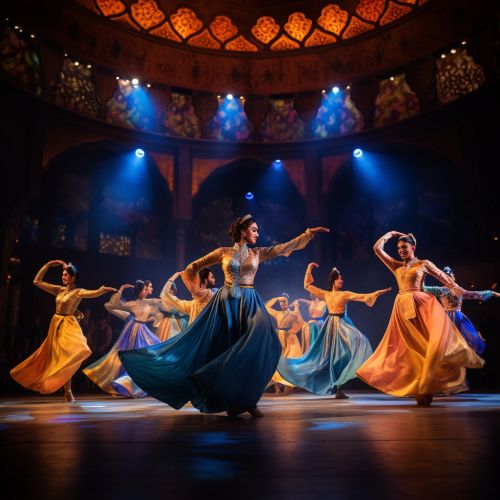Dance genres
Overview
Dance, as an art form and a means of expression, has a rich and varied history. It has evolved into numerous distinct genres, each with its own unique style, technique, and cultural context. This article will delve into the intricacies of various dance genres, focusing on their origins, characteristics, and significance in the world of performing arts.
Classical Dance Genres


Classical dance genres are typically characterized by their long-standing traditions and formalized choreography. They often have roots in courtly or religious rituals and are usually accompanied by classical music.
Ballet
Ballet is a highly technical form of dance that originated in the Italian Renaissance courts of the 15th century. It later developed into a concert dance form in France and Russia. Ballet is characterized by its light, graceful movements and the use of pointe shoes that enable dancers to dance on the tips of their toes.
Kathak
Kathak is one of the eight forms of Indian classical dances, originated from India. This dance form traces its origins to the nomadic bards of ancient northern India, known as Kathakars or storytellers.
Flamenco
Originating in the Andalusian region of Spain, Flamenco is a passionate and expressive dance form. It is characterized by its intricate footwork, sharp movements, and the intense emotion conveyed by the dancers.
Modern Dance Genres
Modern dance genres are often seen as a reaction against the perceived rigidity of classical dance forms. They aim to express the emotional and physical freedom of the human body.
Contemporary Dance
Contemporary dance emerged in the mid-20th century as a rebellion against the strict rules of classical ballet. It emphasizes freedom of movement, improvisation, and the dancer's relationship with the floor.
Jazz Dance
Jazz dance is a performance dance technique and style that first emerged in the United States in the early twentieth century. Jazz dance may refer to vernacular jazz or to Broadway or theatrical jazz.
Hip-Hop Dance
Hip-hop dance refers to street dance styles primarily performed to hip-hop music or that have evolved as part of hip-hop culture. It includes a wide range of styles primarily breaking, locking, and popping.
Social Dance Genres
Social dances are often informal, evolving in a social setting rather than a theatrical one. They are typically danced with a partner and are popular in social gatherings and dance halls.
Ballroom Dance
Ballroom dance refers to a set of partner dances, which are enjoyed both socially and competitively around the world. Its performance and entertainment aspects are also widely enjoyed on stage, in film, and on television.
Salsa
Salsa is a popular form of social dance that originated in New York City with strong influences from Latin America, particularly Puerto Rico, Cuba, and Colombia. The movements of salsa have their origins in Cuban Son, Cha-cha-cha, Mambo and other dance forms.
Swing Dance
Swing dance is a group of dances that developed with the swing style of jazz music in the 1920s–1940s, with the origins of each dance predating the popular "swing era".
